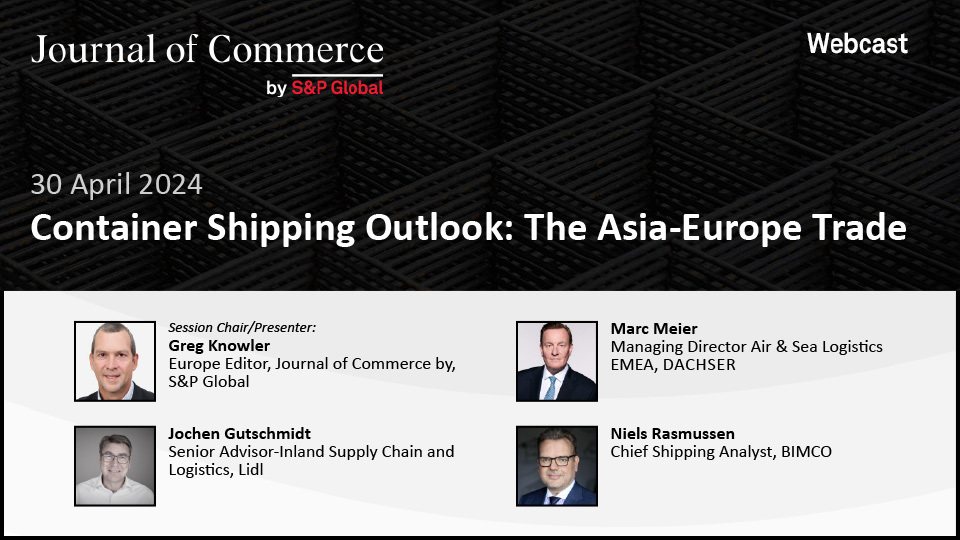BOXCHANGE
Overview
BOXCHANGE
Supporting documents
-
0.3 MB
Sample copy of BOXCHANGE
Download now
Explanatory notes
- Clause 1 - Definitions
- Clause 2 - Duration of the Agreement
- Clause 3 - Condition of Equipment on Delivery
- Clause 4 - Condition of Equipment on Redelivery
- Clause 5 - Delivery and Redelivery Procedures
- Clause 6 - Payment of rent and other Charges
- Clause 7 - Taxes, Fees and Fines
- Clause 8 - Termination of Agreement
- Clause 9 - Build-down Period
- Clause 10 - Insolvency
- Clause 11 - Lien
- Clause 12 - Liabilities and Indemnity
- Clause 13 - Direct Interchange
- Clause 14 - Insurance
- Clause 15 - Dispute Resolution Clause
- Clause 16 - Notices
In accordance with standard BIMCO practice, the agreement is laid out in two parts with an additional two annexes. Part I is in the form of a box layout and contains all the variable information whilst Part II contains the standard terms and conditions. Part I and the two annexes form the actual Contract, and in event of a conflict between Part I and the two annexes and Part II, Part I and the two annexes will prevail.
The main idea behind this division is that it is more convenient for the user to do all the filling in, amendments and special provisions in Part I, leaving the printed text of Part II unaltered. In this context it should be emphasised that a standard contract constitutes an integrated whole and that any changes to one or more of the clauses may upset the intended balance of the contract as a whole. This fact should never be lost sight of when attempting to introduce changes or amendments to the standard clauses in Part II which have been carefully drafted to take care of the contractual and legal aspects.
Part I
All variable details pertaining to the particular contract are to be entered in the boxes provided. Each box contains a short description of the intended contents and a cross-reference to the relevant clause or clauses in the printed body of Part II.
Although some of the boxes in Part I may call for special attention in these Notes, it has been considered more practical to make such comments when dealing with the relevant clauses in Part II.
Part II
Clause 1 - Definitions
BOXCHANGE contains a definitions clause in which the terms have been listed alphabetically.The Supplier has been defined as the party supplying the Equipment to the other party, whereas the User is the party utilizing the Equipment supplied by the Supplier. It will be seen that both Box 2 and 3 refers to User/Supplier. This is so because both parties will often be users and suppliers of equipment at the same time and thus the contractual terms should be mirrored.
Wear and Tear has been defined in accordance with the IICL 5 Repair Standards, provided by Institute of International Container Lessors (IICL). This standard is well-known to the industry and provides clear definition of what is considered wear and tear.
Other definitions are self-explanatory and the same as those found in CONLEASE.
Clause 2 - Duration of the Agreement
Clause 2(a) effectively sets out that the agreement will remain in full force from the date stated in Box 1 until the equipment has been redelivered, damaged beyond economical repair or lost. In many cases the interchange of containers will be done on a trip basis, Clause 2(b) therefore stipulates that unless otherwise agreed, the equipment is to be used on a trip basis to counter balance the mutual equipment demand.
Clause 3 - Condition of Equipment on Delivery
This clause requires a warranty from the Supplier that the equipment is in a good and serviceable condition when delivered. It also sets out the most important standards to which the equipment must be designed, manufactured, tested and maintained. As opposed to CONLEASE it is no longer the IICL standards that must be applied, but instead the Unified Container Inspection and Repair Criteria/Refrigerated Container Inspection and Repair Criteria (UCIRC/RCIRC). Unlike other repair criteria UCIRC/RCIRC sets out both standards to be applied in respect of repairs and cleaning of containers. Furthermore, should the parties wish to apply other repair criteriad, they can agree to do so by filling in Box 5.
According to Clause 3(c) the Supplier warrants that the equipment is under an Approved Continuous Examination Programme (ACEP).
In accordance with Clause 3(d) the User may appoint a surveyor to inspect the equipment prior to interchange. This survey report will serve as prima facie evidence of the condition of the equipment interchanged.
Clause 3(e) provides that in the event of mis-picks or interchange of loaded equipment the equipment will be changed on “as is” basis and the equipment is still subject to the requirements set out in Clause 3(a), however, when agreeing on “as is” the equipment may be interchanged even outside UCIRC/RCIRC condition.
Clause 4 - Condition of Equipment on Redelivery
This clause mirrors the provisions of Clause 3 specifying that the containers must be redelivered in UCIRC/RCIRC condition or as per other repair criteria, if stated in Box 5.
Furthermore, Clause 4(b)(i), (ii) and (iii) provide that repair costs may be covered by way of franchise, by lump sum or on the basis of a repair estimate for each piece of equipment. In addition to that, Clause 4 (b)(iv) provides a calculation method in order to determine the Depreciated Value. If the repair cost exceeds the Depreciated Value, the User shall pay that amount only. However, the amount can never exceed the Residual Value also stated in Box 4. The Depreciated Value is found by depreciating the Replacement Value with a yearly Depreciation Rate.
Example
It has been agreed between User and Supplier that the Replacement Value for 1 x 20 ft. dry cargo container is USD 2,000.00, the Residual Value has been agreed as USD 400.00, franchise is USD 100.00 and the yearly Depreciation Rate is 10%. While the container was in the User’s possession it was damaged and by way of repair estimate it has been established that the repair cost is USD 1,000.00. The container was damaged exactly 4 years after it was built. The calculation would be as follows:
1 year: USD 2,000.00 depreciated by 10% = USD 1,800.00
2 year: USD 1,800.00 depreciated by 10% = USD 1,620.00
3 year: USD 1,620.00 depreciated by 10% = USD 1,458.00
4 year: USD 1,458.00 depreciated by 10% = USD 1,312.20
Depreciated Value USD 1,312.20
Residual Value USD 400.00
The depreciated value of USD 1,312.20 exceeds the Residual Value of USD 400.00. Therefore, the User must pay to the Supplier the repair cost of USD 1,000.00 less franchise of USD 100.00, in total USD 900.00.
If the User makes no objections to the Supplier within an agreed number of working days after receiving the repair estimate, the User will pay for the repairs in accordance with the provisions of Clause 4(b) and the repair estimate (please refer to Clause 4(c)). However, if the repair estimate is disputed, Clause 4(d) comes in to play. This Clause sets out the procedure in case of a repair estimate being disputed by the User. In that case a joint surveyor must be appointed and the parties will be bound by his decision.
Clause 4(e) sets out that all damage shall be defined in accordance with RCIRC/UCIRC repair criteria and that the actual repairs shall be performed in accordance with the Institute of International Container Lessors (IICL) Repair Manual.
Clause 5 - Delivery and Redelivery Procedures
A provision has been included in Clause 5(a) to ensure that depot, handling and transportation costs to the depot will be for the account of the User. Furthermore, the clause sets out that an Equipment Interchange Receipt (EIR) shall be signed prior to the redelivery of the equipment. Finally, a provision has been included in respect of reefer containers allocating the cost for pre-trip inspections to the User and the cost for post-trip inspections to the Supplier.
Clause 5(c), (d) and (e) sets out the procedures in connection with redelivery of the equipment. Furthermore, specific reference is made to Annex A Supplier’s Depots and B Supplier’s Redelivery Schedule in order for the User to observe the specific redelivery quota, charges and places.
Annex A contains the addresses for the Supplier’s depots. Whereas, Annex B contains the Supplier’s Redelivery Schedule. Annex B has been divided in to 3 vertical columns, in the first column the Supplier must state depot name, for example “New York” and the next two columns are allocated to the various types of equipment. A code will be inserted in the two vertical columns after the name of the depot in order to see whether that particular depot has unlimited redelivery (X), return subject to approval (-) or it is closed for redelivery (C).
Clause 6 - Payment of rent and other Charges
Clause 6 (a) states that the User must pay, as rent, an agreed daily rate and other charges such as depot and handling charges.
According to Clause 6(b) a monthly invoice is to be sent to the User’s address. Furthermore, it will be seen that no time-bar has been included in the clause. It is left to the background law of the law chosen to determine when an invoice becomes time-barred.
In order to avoid discussions as to whether payment should be made within a number of working, banking or running days, it is explicitly stated in Clause 6(c) that payment should be made within the number of running days stated in Box 10.
In order to keep the structure of the document simple and user-friendly, Clause 6(d) and Box 6 gives the User the same number of days notice if the invoice is disputed as is the case with the repair estimate in Clause 4(b).
Clause 7 - Taxes, Fees and Fines
This Clause allocates the responsibility for payment of taxes, fees and fines. It is clearly stated that all taxes, dues and charges arising out of the usage of the containers are for the User’s account whereas all taxes, dues and charges arising in connection with the ownership of the container are for the Supplier’s account.
Clause 8 - Termination of Agreement
Both parties may terminate the agreement in writing with immediate effect as per Clause 8(a) and thereafter the build-down period as per Clause 9 will commence. However, in some instances the parties may wish to terminate the agreement without a build-down period. Clause 8(b) enables the parties to terminate without a build-down period in the following instances: if the equipment has been curtailed or obstructed by any legislation or regulation of any Government or statutory body of any country where the User wishes to use said Equipment; or if the equipment is shown to have Latent Defects such that it is unsafe or unsuitable for continued use.
Clause 9 - Build-down Period
It is obvious that with any sizeable quantity of containers spread out geographically, timely redelivery becomes a logistical problem. It is therefore common that a certain build-down period is agreed, during which the containers may be redelivered and are on hire at the agreed rate. If Equipment is still being used after the build-down period, the Supplier may at his discretion either increase the daily rate as per Box 4 or he may invoice the User for the Depreciated Value of the Equipment
Clause 10 - Insolvency
According to this clause either party may terminate the agreement in the event of the insolvency of the other. If the Supplier terminates in accordance with Clause 10(a), Clause 10(b) provides that he shall have the right of immediate repossession of his equipment provided it is empty. It should be kept in mind that it is not the Supplier who has the contractual duty towards the cargo owners to deliver the cargo.
Clause 11 - Lien
This Clause stipulates that the supply of containers under this agreement will not result in any lien being attached to any vessel connected in any way with the User, that being maritime, statutory, possessory or otherwise. The Supplier is relying solely upon the credit of the User in supplying Equipment.
It will be seen that, as opposed to CON-LEASE, the clause title refers only to “Lien” instead of “Maritime Lien”. This change has been introduced in order not to confuse the clause with the well-established term “maritime lien” which cannot be established contractually and has a special meaning in shipping law.
Clause 12 - Liabilities and Indemnity
Clause 12(a) places liability for damage or total loss of the equipment on the User. In case of actual or constructive loss the Supplier shall be immediately notified upon which hire ceases and the User becomes liable to pay the Depreciated Value. If a container which is declared lost turns up again, the User can request reimbursement for the Depreciated Value paid to the Supplier.
Clause 12(b) provides that each party is to defend, indemnify and hold the other harmless for any claims, loss or damage arising out of their respective responsibilities. In the case of User for the possession, leasing, operation, control or use of the Equipment and in the case of the Supplier for the incident to the ownership, manufacture, design or supply of the Equipment.
Clause 13 - Direct Interchange
In order to prevent the User from benefiting from a favourable leasing between the Supplier and a third party Lessor, by picking up leased containers from the Supplier, this provision has been included whereby the User takes over all Equipment owned by commercial third party Lessors after 365 days from the date of interchange by Direct Interchange in accordance with the User’s Master-Lease contracts.
Clause 14 - Insurance
This Clause set out which insurances both parties are required to procure and maintain. Furthermore, the User and Supplier must keep general liability insurance up to the minimum limit stipulated in Box 12.
Clause 15 - Dispute Resolution Clause
This Clause is the latest edition of BIMCO’s standard suite of dispute resolution provisions.
It should be noted that if nothing is entered in Box 13, London is the venue for arbitration and English law will apply.
The Clause incorporates a mediation provision. This provision is designed to function in conjunction with the chosen arbitration option, whether that is English law, London arbitration; US law, New York arbitration; or law and arbitration as agreed.
Mediation is a technique that is recognised as offering savings in costs and time over traditional methods of dispute resolution for certain types of disputes. BIMCO’s mediation is only triggered once arbitration proceedings have commenced and then runs in parallel with those proceedings, if the parties so choose. This has been done to ensure that one party cannot invoke mediation as a delaying tactic.
Clause 16 - Notices
This clause is self-explanatory
Copyright, BIMCO’s idea and Printers
Copyright in the BOXCHANGE form is held by BIMCO.
(Printed in BIMCO Bulletin No. 1, 2005)
Related Help & Advice
Create or edit a contract
The one-stop digital shop for all the standard maritime contracts and clauses you’ll ever need.
Latest Related News
-
BIMCO publishes ship financing forms to ensure uninterrupted use of ships
BIMCO has published two standard Quiet Enjoyment Letters (QELs), the first standard form QELs available to the industry, to offer a tool that can ensure the charterers’ uninterrupted use of a ship if the owner defaults under the financing facility.
-
BIMCO starts work on contract for growing wind turbine market
BIMCO has established a subcommittee to work on a global standard contract for the transport and installation of offshore wind turbines. The project has been launched to support the offshore wind industry as the global demand for more renewable sources of energy increases.
-
BIMCO approves revised SYNACOMEX grain charter
BIMCO’s Documentary Committee has approved a revised version of the Continent Grain Charter Party, SYNACOMEX, to reflect changes in the geopolitical landscape following events including the COVID-19 pandemic and the war in Ukraine. The revised charter party now includes BIMCO’s anti-corruption clause and updated versions of the war risks and sanctions clauses.
-
BIMCO publishes updated GENCON contract
BIMCO has published a revised and updated version GENCON 2022 - one of its flagship contracts within its portfolio of standard contracts for the maritime industry. The revisions reflect significant changes in the regulatory landscape since the contract was last updated.
-
BIMCO launches ship sale and purchase agreement
BIMCO has produced its own ship sale and purchase agreement - SHIPSALE 22 – with the aim of making the authoring, negotiation and execution process faster and simpler, and to provide the market with a modern and comprehensive alternative to existing sale and purchase forms.
ELSEWHERE ON BIMCO
Holiday calendar
BIMCO's Holiday Calendar covers general holidays in over 150 countries, plus local holidays and working hours in more than 680 ports around the world.
Taxes, tariffs & charges
Access information on national, regional or port tariffs, taxes and charges.
Learn about your cargo
For general guidance and information on cargo-related queries.





